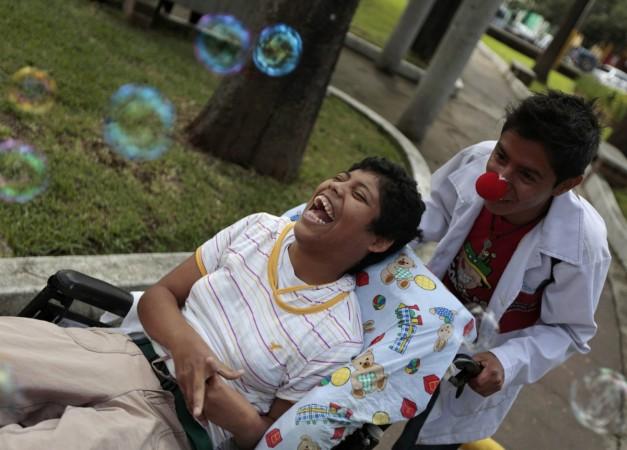
World Cerebral Palsy Day is celebrated on 1 October. It originated as an innovation project launched in 2012 by Cerebral Palsy Alliance (Australia) and America's United Cerebral Palsy.
Supported by over 270 cerebral palsy organisations, universities and institutions, the day is aimed at gathering ideas from people with cerebral palsy and their supporters. Organisers choose the best of ideas and try to make them a reality.
This year's theme is "Change My World in One Minute" and participants must create a text or a video for an idea, which could change the life of those suffering from this condition.
Cerebral palsy is a condition of permanent movement problems causing physical disability in body movement. Often associated with problems on sensation, depth perception and communication ability, cerebral palsy also leads to difficulty with cognition and epilepsy in about one-third of the cases.
Cerebral palsy is caused by damage to the centres in the developing brain, which controls movements. The damage could occur during pregnancy, childbirth, or after birth up to around three years of age.
Here are 10 most important facts about cerebral palsy (CP).
- There is one child born with cerebral palsy in Australia every 15 hours, according to the Cerebralpalsy.org website.
- CP is considered to be the most common physical disability in childhood.
- Cerebral palsy is a broad term to include a group of disorders. The condition is permanent but not unchanging.
- About two to three children out of every 1,000 children have cerebral palsy in the United States.
- About 10,000 babies born each year will develop cerebral palsy in the US alone.
- In most cases, brain injury leading to cerebral palsy occurs during pregnancy.
- In most cases, cerebral palsy can be evident in the first 12 to 18 months and motor disability can range from minimal to profound, depending on the individual.
- It can range from mind form of weakness to an almost complete lack of voluntary movement which requires 24-hour care.
- Spastic hemiplegia, in which one half of the body has difficulty with voluntary movement, is the most common manifestation of cerebral palsy with approximately 40 percent of people with CP having hemiplegia.
- There is no known cure for cerebral palsy.








!['Lip lock, pressure, pyaar': Vidya Balan- Pratik Gandhi shine in non-judgmental infidelity romcom Do Aur Do Pyaar [ Review]](https://data1.ibtimes.co.in/en/full/797104/lip-lock-pressure-pyaar-vidya-balan-pratik-gandhi-shine-non-judgmental-infidelity-romcom.jpg?w=220&h=138)








